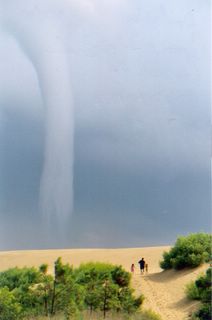Sea Grant of NC ~ Summer/Fall 2005
posted @ 2:37 PM
-
0 comments
Sea Grant of NC ~ Summer/Fall 2005: "Rights of Oceanfront Property Owners in the 21st Century: Part II
By Joseph Kalo and Walter Clark
In the the first issue of Legal Tides, we discussed the concepts of littoral (oceanfront) ownership and littoral rights, and how the seaward boundary of oceanfront property changes as the location of the mean high tide line changes due to the natural processes of erosion, accretion and avulsion.i In this issue, we will examine the legal effect of artificial additions to the shoreline. These additions occur when the beach is expanded and the shoreline is altered as the result of beach nourishment projects or other activities involving the deposit of sand.
As a foundation for examining the effect of these types of additions to the shoreline, three points should be kept in mind:
• As a general matter, all submerged land seaward of the mean high tide line is owned by the state. These submerged lands are typically referred to as public trust lands or, on occasion, as 'sovereignty lands.'
• Without permission from the state, no one has the right to fill state-owned public trust lands. In fact, an unauthorized filling of these lands is considered a trespass, and the person responsible for the filling is liable.
• If someone, without state permission, fills public trust lands and raises the submerged land above the mean high tide line, the person acquires no right or tide to the land no matter how much time passes.ii The traditional doctrine of adverse possession is not applicable to claims involving public trust lands.
With these points in mind, we will examine the law of North Carolina in the 21st Century, as it relates to filling state-owned public trust lands for beach nourishment or other activities involving the deposit of sand."








0 Comments:
Post a Comment
<< Home